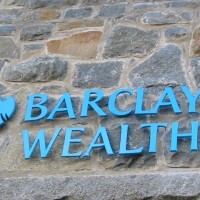If you’ve been following the news lately then you have probably heard something about Barclays and interest rate fixing. Barclays is a massive banking corporation based in the UK with a large world-wide presence. By ‘interest-fixing’ financial commentators mean Barclay’s lied about the London Interbank Offered Rate (LIBOR) and the Euro Interbank Offered Rate (EURIBOR).
These are the rates banks charge one another for loans. They are similar to the Federal Funds Rate of the Federal Reserve System in the United States; they are important benchmarks for businesses and economists.
Barclays used LIBOR rates that were lower than they actually were from 2005-2008. The result was increased profits and a stronger outlook during the global recession. By keeping rates artificially low, Barclay’s was able to make credit cheaper, extend more loans, thus collecting more profits.
Why are central banks not accused of interest rate fixing? In the United States, the Federal Reserve literally creates money to buy treasury assets to try and influence interest rates.
The messages and emails between Barclay’s and a banking regulator (some sources even indicate the US Fed knew something too) indicate the close relationship between mega-banks and central banks. Central banks across the globe responded to the global by cutting interest rate targets to create easy credit to stabilize banks.
Let me get this straight: we need central banks to manipulate monetary policy to avoid depressions. Part of that means providing cheap credit (at least in the current institutional framework), which means somehow lowering interest rates in hopes banks would use this cheap credit to provide consumers with cheap credit.
The LIBOR fixing scheme is intricately related to central bank interest rate manipulation. In the case of Barclay’s it may or may not be explicit. Regardless, central banks encouraged this behavior by keeping interest rates incredibly low.
One opinion author is outraged, calling for prosecutions to end a corrupt banking system. The outrage is appropriate, but i doubt throwing some bankers in jail will solve the root problem. The author correctly identify’s this as cartel behavior, so how do we end it?
The fact is a central bank helps large banks hold onto cartel power through bailouts and the discount window. Central banks are banks for bankers. Large commercial banks have demand deposit accounts with the Fed like you have a checking account with your bank.
Without a central bank, banks would not have a lender of last resort to borrow from to create more credit to squeeze out more loans and profit. They might still be able to create more bank notes than deposits, but competition will keep them from a vast over-extension. With a central bank, that limitation on loan creation is gone.
To break the cartel power of banks requires a systemic change in the rules of the game, not simply punishing various actors (however guilty they are). The current system twists incentives and manipulates credit in way that begs banks to make phenomenal profits. Until that is changed, we will continue to uncover scandals like Barclays.
Caveat: I write this when the story is constantly expanding, so my facts and inferences might become colossally misinformed as time passes and information is revealed.


No comments yet.